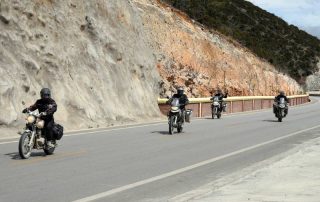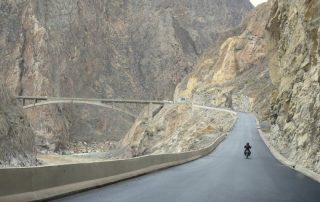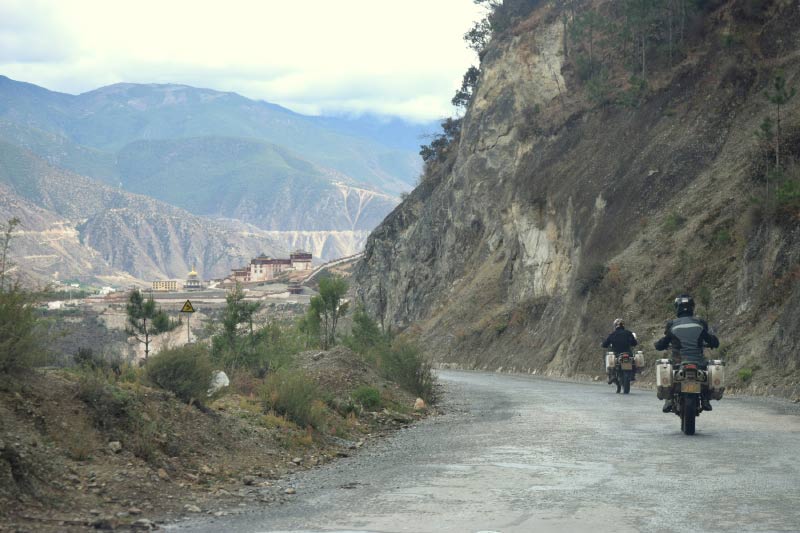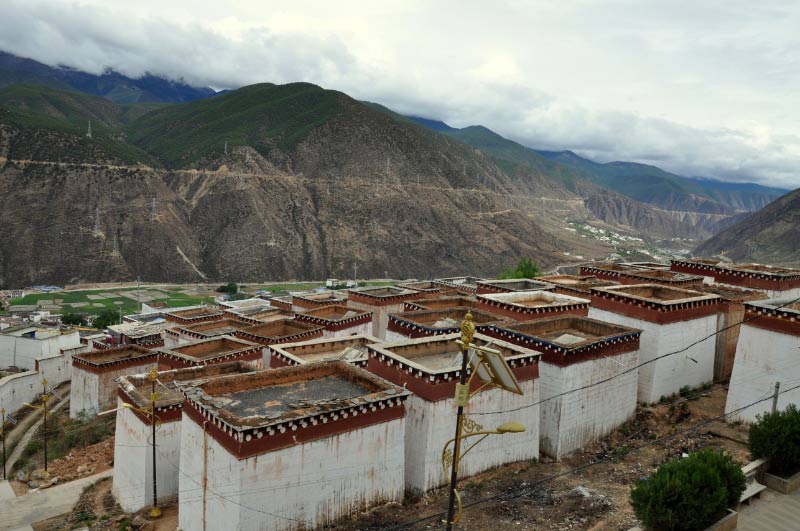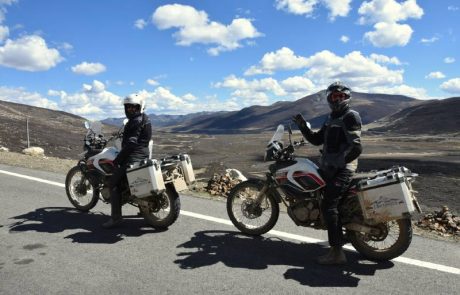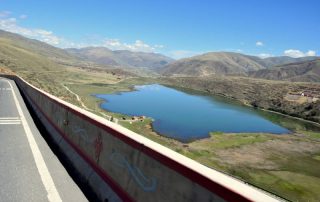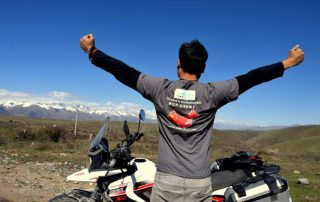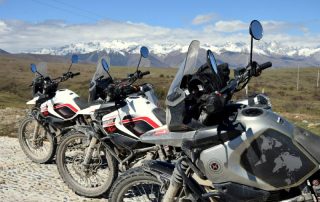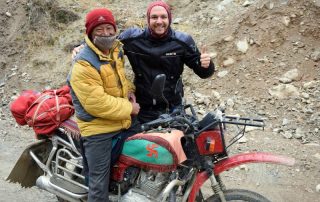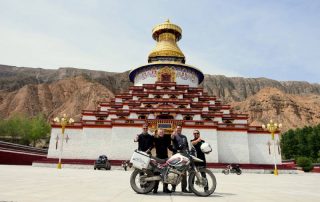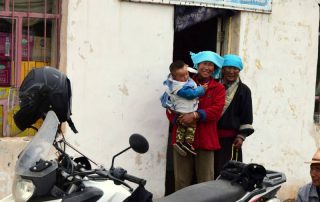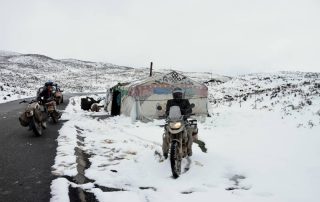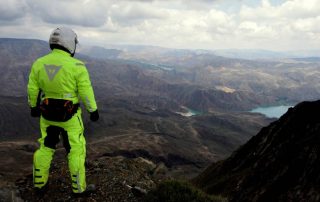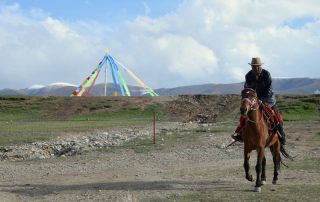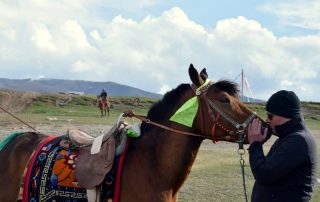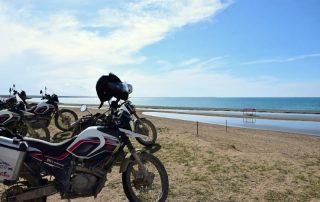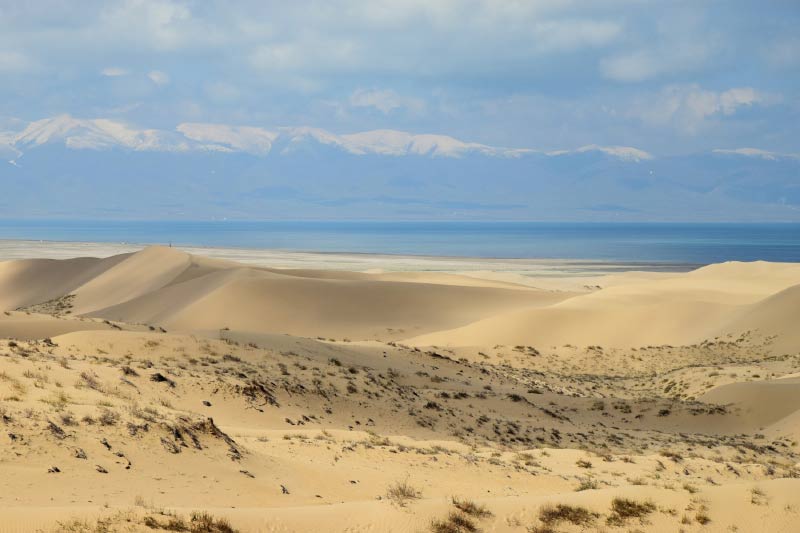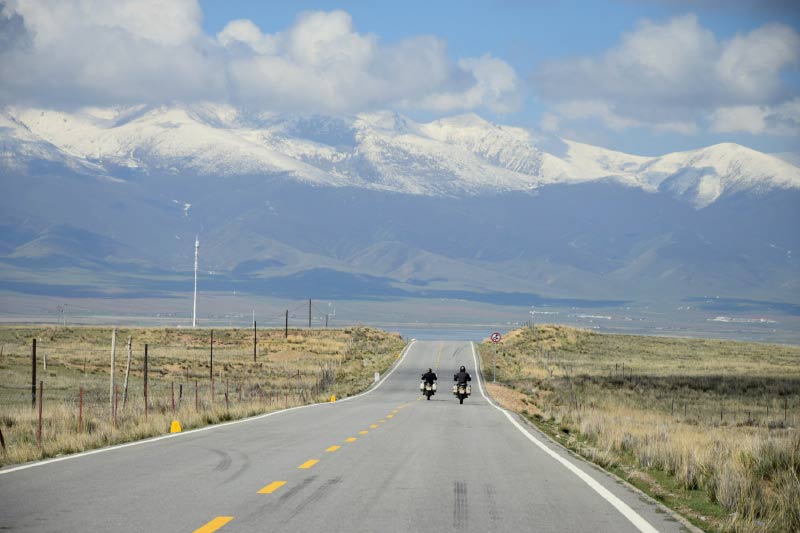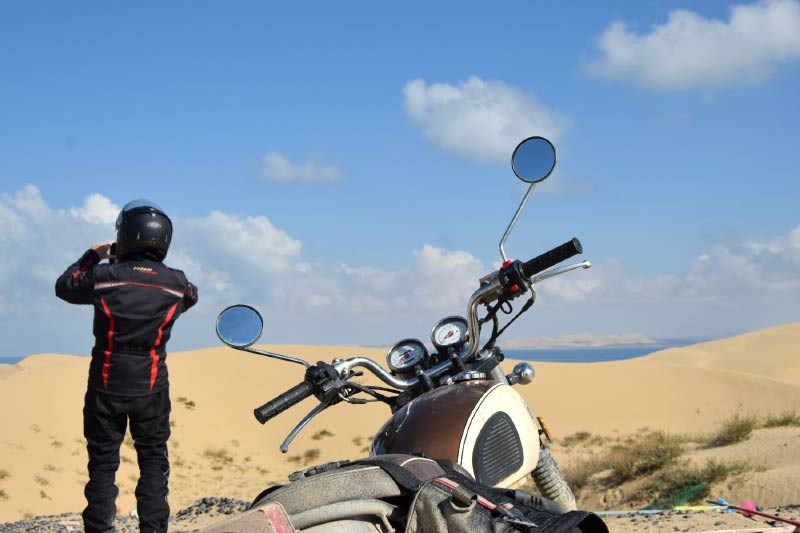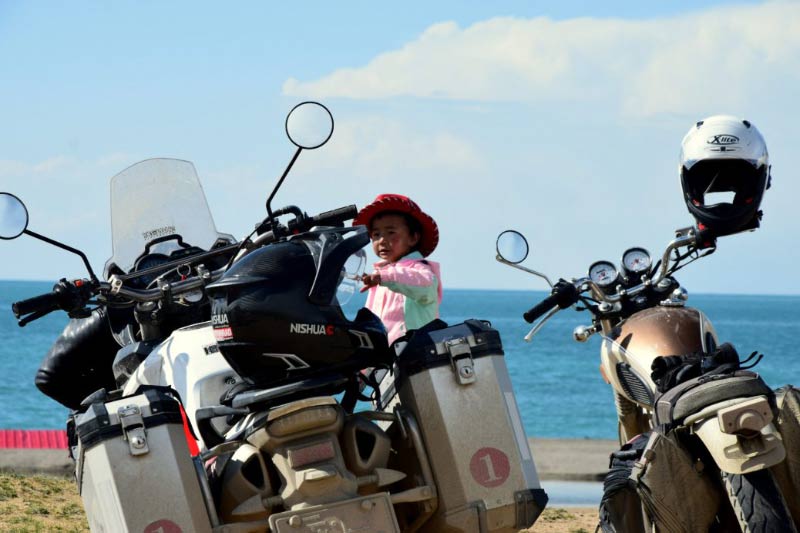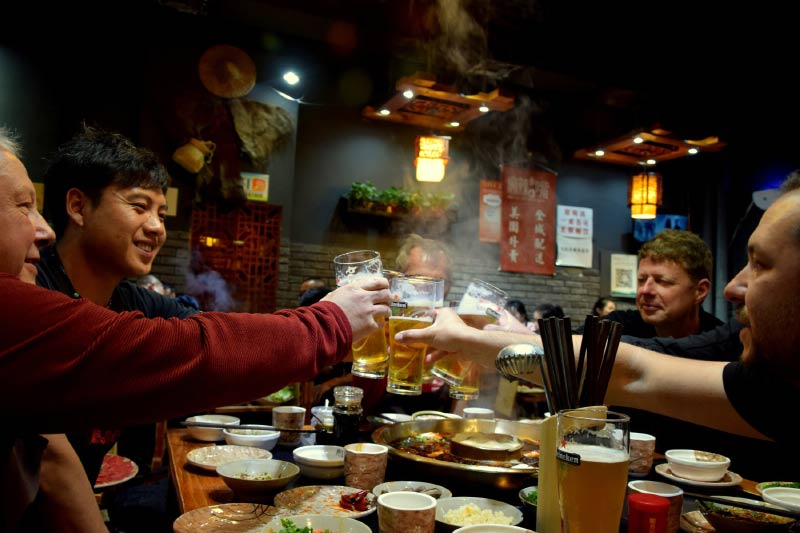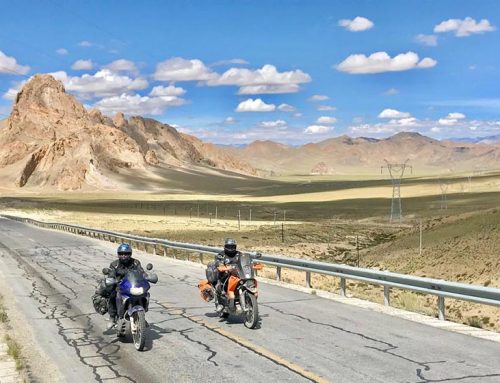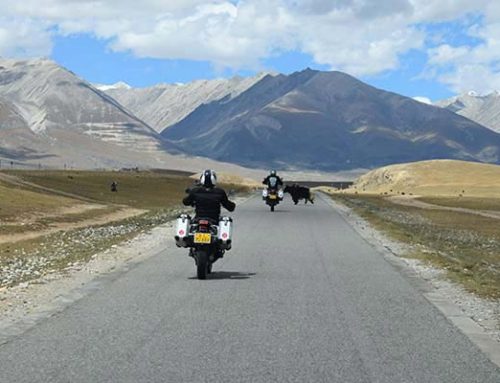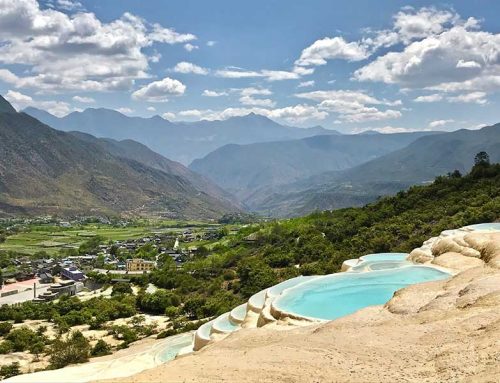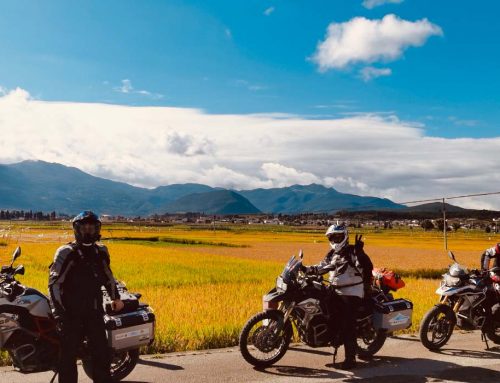At the roof of the world… Or, the diversity of China in 12 days
Our intern Svenja reported
I could hardly wait to ride with Tibetmoto on my first motorbike tour of China. Weeks before the trip was to begin, I was already looking at pictures of the four super-interesting provinces, getting into the landscapes pictorially. Yunnan, Sichuan, Gansu, Qinghai-here we come!
And then we were ready: after we, the Tibetmoto team, had checked the motorcycles one last time and got them transported from Dali to Lijiang, we welcomed our guests from Germany on the evening of May 14, 2017. A small group of four experienced motorbikers and adventurers.
After a well-deserved welcome beer after the long journey, we went to the Old City of Lijian where we found ourselves a cozy little place in the middle of “Food Street” and enjoyed a traditional Chinese meal with many dishes. After we had marvelled at the famous waterfall of Lijiang, we went on a discovery tour through the narrow streets with their coloured lights. We heard the sounds of the different kinds of music coming out of the many clubs, bars, and restaurants, and walked among the old, traditional wooden buildings, with their golden illumination creating a warm, pleasant atmosphere.
After the briefing the next morning, our group finally got on the motorbikes. Bags and baggage were stowed, the final organizational preparations were taken care of, and our motorbike tour of China could begin.
Already after our first stop, I was surprised how attractive a group of foreigners on motorbikes seemed to be for the locals. It was not only at the first stop that there were requests for numerous photos and selfies.
It was a cultural exchange of a very special kind since conversations and discussions were carred out using hands and feet, where the meaning could only be guessed.
Our route took us along the Yangtze River, with a view of spectacular gorges, to Shangri-la, where we had dinner in a traditional Tibetan restaurant on the slope of a canyon, with a view over a beautiful green valley. In the late afternoon, and punctually at the start of the rain, we reached the sleepy village of Benzilan.
Our second riding day took us to Xiangcheng. The ride there was stunning, with barren hill landscapes and, hidden among these, lush green village oases. The building style also changed. In the afternoon, we ga altitude, and the road took us through three passes at altitudes of 3300m, 3800m and 4150m. Especially the last pass brought changes in the weather. Wind, cold fog, hail. And not a soul to be seen. However, it was not the end of the world. After another hour’s ride, we broke through the cloud cover and started downhill into the valley, toward the sun. And there, a special highlight was waiting for us: the Sangpi Monastery.
In the gray-green hills, a red-golden temple complex stood out. A temple complex from the 17th century. We left our bikes in front of the temple. After they had been inspected from every angle by the monks, we set out on a tour of the inner temple. Hendrik recounted facts and told historical stories of Buddhism and the temple itself. I loved the costly, lovingly crafted decorations. The huge temple courtyard was surrounded by square houses for the monks, and by the silence-a magical place. After only a half hour’s ride, we reached Xiangcheng, where we spent the night.
On the next day, we reached the highest city of the world, Litang. With the best of weather and a perfect mood, we rode along an excellent asphalt road that led us through the Haize Lake District; a broad plain of huge boulders and hundreds of small lakes. We were unanimous in the decision to leave the main road, take an alternative route, and visit a small, remote lake about 10km away. This route could have been made specially for off-road enthusiasts. It went along a gravel road through a dramatic desert of stone, sand traps and sand hills, until we reached a small lake in the middle of the barren landscape. A real trip to the moon at a high temperature- pure action.
The trip continued and soon the road was snaking its way at over 4000 metres until we reached Mount Rabbit, the highest pass of our tour, at a height of 4696 metres. From here, we had a fantastic panoramic view of nomad huts and a small lake surrounded by yaks. In the late afternoon, we reached the city of Litang at an elevation of 4,100m, surrounded by a sunlit chain of snow mountains. The altitude went to the heads of some of us, but at the end of the day, we were rewarded with delicious momos (Tibetan pasties) and a beautiful sunset.
Since Litang was the birth place of the 7th and 10th Dalai Lama, we made a visit the next morning to see the house where the 7th Dalai Lama was born.
„White crane!
Lend me your wings
I will not fly far
From Lithang, I shall return“,
in this way, the 6th Dalai Lama announced his next rebirth.
After this little tour, our trip proceeded on to Ganze.
We had now reached the lowlands of Tibet. Wherever you looked, there were wine-red monk robes, prayer flags on the slopes of the mountains, and stupas at every second exit. With the chatter of the turning prayer mills in our ears, the scent of incense and the taste of the sharp, sour Sichuan pepper on our palates, we proceeded to immerse ourselves even deeper in the life of the Tibetans.
We rode over pastures of grazing yaks and sheep. The road to Ganze led us through a winding alpine forest valley of conifers, and then again through pastures and small monasteries, always surrounded by high mountains.
I was not only fascinated by the way the landscape changed but, also, how the houses changed from region to region. Earlier in the trip, there had been colourfully decorated wooden houses, some kilometres further on, brown houses of clay, and the next village had only decorative red houses. And in each village, the houses looked identical, which probably is due to the fact that the whole village gathers together to make the house for a family.
We followed the winding roads along the roaring river toward the snow-covered mountains and lost altitude until we reached Ganze, totally surrounded by snowy mountains and grassy hills. In Ganze, we let the day depart with a beer on the roof terrace of the hotel, with a fantastic view of the valley.
The following day, however, went somewhat differently than planned. After I had a last look at the view of the fantastic sunrise from the roof terrace, the trip was supposed to proceed to Seda, the biggest Buddhist institution of learning in the world. Especially for me, this would be one of the highlights of the motorbike tour in China, and I could hardly wait. A white papel allee led us out of Ganze, back into the pasture country.
However, after we had crossed another winding pass, we ran into a passport control station at the gates of Seda. And, although the police apologised profusely to us, they could not, for some reason, allow us to pass. So we turned back. Sadness on our faces. We stopped at a rest area, Hendrik got out his maps, and, in under half an hour, we had a plan B, a new route. The adventure could begin because this route was not known to any of us and we did not know what to expect. In spite of the Seda incident, the mood of the day was amazingly good.
We rode through pine-dense coniferous forests, where the bright, green tones of the trees painted a veritable picture. The sun blazed its way through the treetops of the pines, and a dream-road in the middle of the alpine landscape allowed our mood to to rise even higher. We found many temples and pagodas on our road, even traditional wooden buildings on the mountain slopes. After another day with wonderful riding in spite of the route change, we arrived at a village undiscovered by tourists where we were received by the local inhabitants with big eyes, great curiosity, and cordiality.
The next day, we were able to continue our tour as planned. This was our longest day on the road. The road went toward Jiuzhi, and the fantastic China motorbike tour followed it. This area is subject to especially strict control by the state. On this day, we had to go through three police controls, were registered in the police system three times, and, finally, had to make selfies with the police force at three checkpoints. And even if took a lot of time, it was an enjoyably comical experience.
Especially when we rode with a police escort out of one district and were received by another police escort at the next district. Our thoughts circled, trying to think of when we had ever had so much attention. It felt like we were celebrities. On this day, not only the Sichuan police was waiting for us, but also five breathtaking passes which were all above an altitude of 4,000m. In the last pass, we saw the valley of Jozhe, where we tasted the locally distilled Baiju liquor and fell into bed after a long (10 hours), exciting day.
On the next day, we headed toward Langmusi, 210km away. We left the mountain country and found ourselves on a slick high plateau again, where we crossed the roaring Yellow River twice. Steppes, prairies, safari tours. The dry land of the high plateaus was like an African safari tour, not only because of the marmots who raced from burrow to burrow, shepherds who crossed our road, horses racing alongside us, eagles circling above us, and blackneck birds observing us curiously from a distance. We rode toward the broad horizon until we spotted a fire-red canyon in the distance. After a short day riding, we reached Langmusi, hidden behind an enormous mountain range.
Fortunately, the day still had enough hours for us to investigate this wondrously beautiful place. Langmusi, a sleepy village, and only the little brook in the middle of it separates the Sichuan and Gansu provinces from one another.
On the Sichuan side, the magnificent canyon, and on the Gansu side, in unbelievable contrast, the golden Gompa Temple with an apline panorama in the background.
We strolled through the streets, enjoyed the meditative calm that this place radiated, observed the numerous monks livening up the life in Langmusi, and walked to the northernmost mountain, where the traditional Tibetan sky burials are still practiced. Tibetans do not bury their dead. Instead, they take the corpses, for religious reasons, to a mountain where they are eaten by vultures. Often, the dead will be cut into smaller pieces so it will be easier for the birds to take them away. The bones on the sides of the mountains, tools of all kinds, and a frightening, mystical atmosphere like no other. It was, of course, not easy to investigate this burial ground, but still interesting to immerse oneself a little deeper in the mystical Buddhist culture, and to respect it and understand it.
The further we travelled toward the south, the more Muslims there were. We often ate in Muslim restaurants and enjoyed the traditional specialties. This day also allowed us another immersion in the Tibetan culture. The tour travelled on toward Labrang. Labrang is a huge temple complex, built at an altitude of 2800m and surrounded by grassland. Even today the monastery is an important Tibetan institution of learning. The next thing to do was a new tour of discovery in the monastery of Labrang. We were fortunate to meet an English-speaking monk there who took us around and told us many stories from the history of Buddhism. The cooled rooms of the butter carvers, which are common among Tibetans, were a special highlight. The monks work the frozen yak butter with great concentraion, love and colour.
The monk led us through various halls of the holy place, and I was glad that I did not try to take any secret photos because photography was not allowed. One Chinese man, however, should have taken the monks more seriously, because we were able to observe how he was chased around the temple by three monks, one of whom had an axe in his hand. At the end of the sightseeing tour, we made a clockwise pilgrimage around the 3km long kora of the temple. Labrang Monastery is a village inhabited by monks. There was a lot to see here. Children played in the meadows, soccer-playing monks, and, of course, the many Tibetan shops, which we, of course, could not resist. In the evening, we visited a Tibetan karaoke show in pleasant surroundings, listened to the traditional sounds of the country and gifted, like the Tibetans themselves, scarves to our favourite singers of the evening.
The following day was, for me, the day with the most diverse landscapes. Although the distance was only 240km, it took more time than planned, because this was probably the most winding road in the world. In good weather and in a good mood, we started out riding through luscious grasslands. Already after a few kilometres, the land dried out and we were suddenly in a bizarre desert landscape of barren sand dunes and sandstone ravines. We visited the residence of the 10th Panchen Lama, where we spent a long time making photos at the gates of the colourful temple with the dramatic scenery of the desert mountains in the background. The tour continued through hectic Muslim villages along the Yellow River until we reached Tongren. Although Tongren, in itself, does not offer much, it is a centre of Tibetan art and culture. An acquaintance of Tashi, my colleague at Tibetmoto, invited us to his home, where he showed us hand-painted thankas (Tibetan paintings on animal hides).
There was more adventure to come, because, on the way to Guide, we had to make another spontaneous change in our route. The original route was supposed to go through the Kanbula National Park, but the road was impassable because of landslides We were forced to take another route, a new one, unknown… And this route also turned out to be one of the highlights of the tour. The route led us through a wide grassland pass. The higher we got, the narrower the road got. Right and left and down it went into the clouds, it felt almost like we were on a heavenly ladder and would soon fly away.
After the last bends, getting higher again, we were suddenly surprised by an edelweiss mountain landscape that fascinated us. Arriving in Guide, we discovered new foodstuffs at the local vegetable market. There we bought nuts and special spices as gifts for our families and friends. We also visited the beautiful Old Town with its splendid gates. We drank the odd beer in the pedestrian zones, made new Chinese friends, and ate some delicious BBQ at a restaurant. On the next day, we were able to see the biggest prayer wheel in the world.
After that, we departed the deep valley of the Yellow River and started to gain altitude again. The trip rode on through the grazing lands of the nomads. When we reached a mountain pass of more than 4000 metres, our last pass, a spectacular view of the Yellow River opened up before us. This scenery was reminiscent of the American Grand Canyon.
Still totally amazed by the breathtaking landscape, the next amazing panorama was waiting for us below: the Qinghai Lake, the biggest salt lake in Asia. The opposite bank was barely visible.
There are 90 kilometres to the other bank of the river. The lake has a surface area of 4300 square kilometres and a depth of 25 meters. A ride around the lake is 350 kilometres long. Again and again, we stopped to take pictures and enjoy the view. We could barely wait to see the lake shore. An hour later, we found ourselves with the motorbikes on the beach. Our hotel was located directly on the lake and we could enjoy the great view of the water from bed. After a long walk on the beach, a delicious dinner and a dream-like sunset, we went to sleep satisfied and looking forward to the last day’s ride.
The next day, before continuing to Xining, the end of our journey, we made another detour to the desert of Quinhai. A very special spectacle of nature: Sand dunes, built up in the wind shadow of the mountains; in the background, the snowy mountains and the azure-blue water of the lake. It reminded us of the Gobi Desert, which is located only 200 kilometres from here to the north-east.
There we were, taking our last ride on this wonderful, fantastic trip. We rode toward Xining in fine weather. A final farewell to the unforgettable mountain scenery, and the last time hearing “tashi delek” – a tibetan greeting and a wish-you-well. In Xining, we left the motorbikes, went to eat a traditional Chinese “hot pot”, a Chinese fondue, and drink the last beer with the group before packing the suitcases and taking the plane back to Germany.
A great trip in spite of detours, police checkpoints and rainy days. Our China Motorbike Adventure ended here, and it seemed almost like it was the end of a world tour. Especially because of the rich variety of the scenery and landscapes, it was a trip like no other. Although I have lived for months in New Zealand, and I was convinced that no other country could have as much diversity, I was wrong. On this trip, I found myself talking with Tashi, again and again, about which country we might be in. “Look, this could be Switzerland”. Look, this could be Ireland… Scotland, Africa, New Zealand, Norway, Marocco, yes, even Germany.” We laughed… And it almost seemed like we were on a trip around the world.
Thanks for the unforgetable time, tashi delek and see you soon.
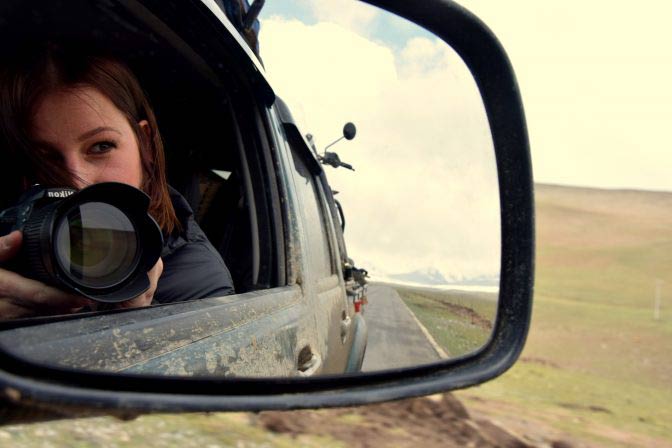
Svenja Mariella Wilkens





